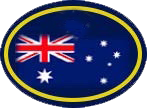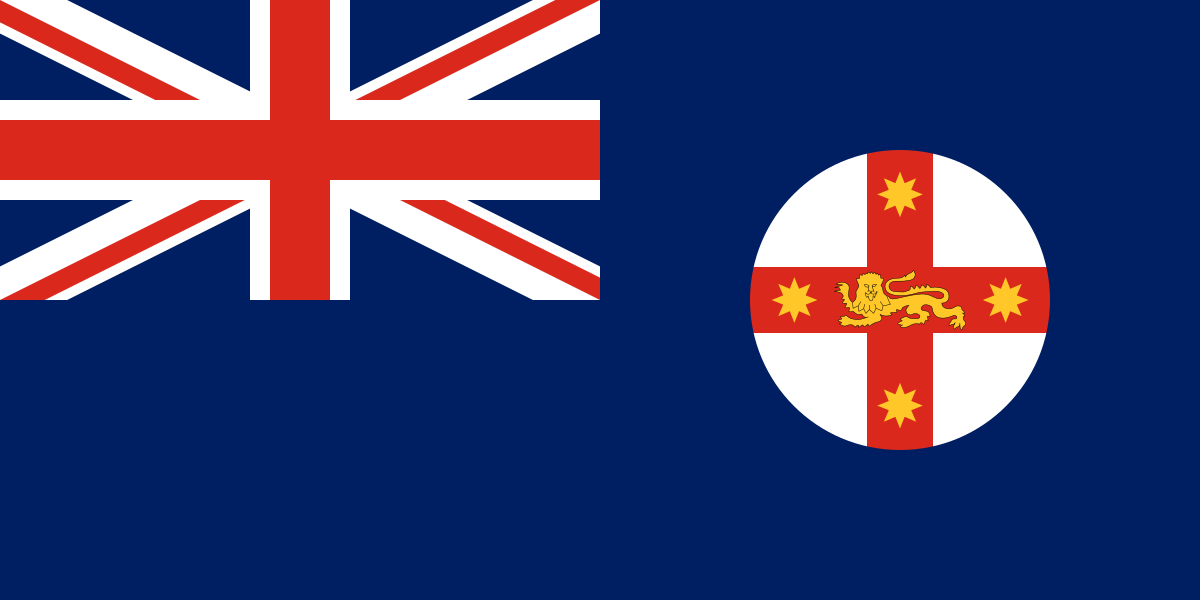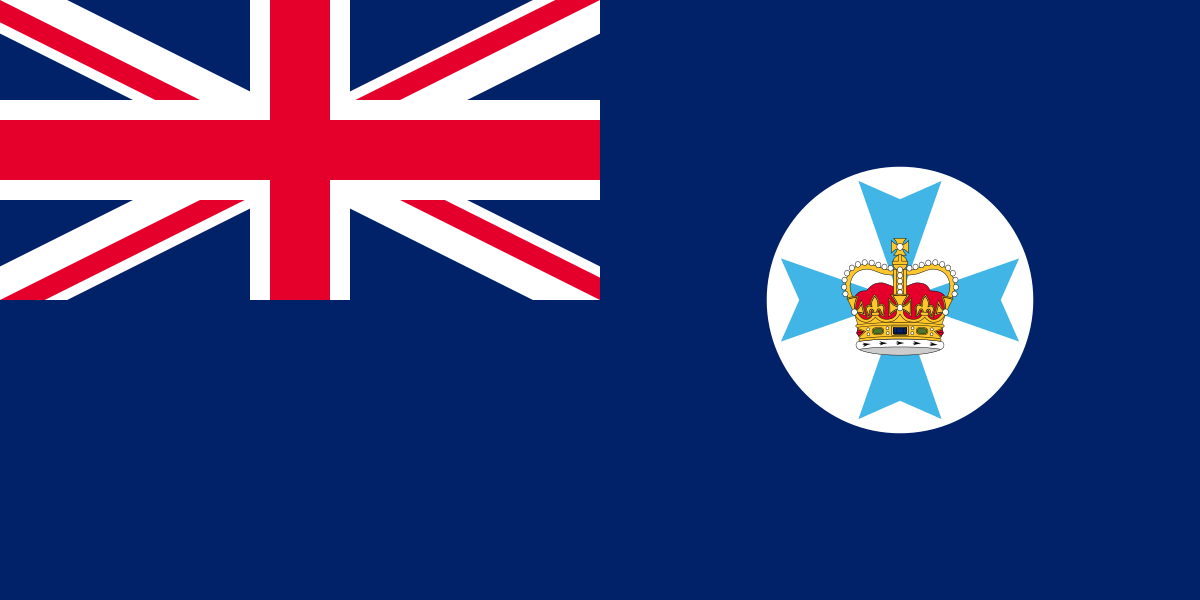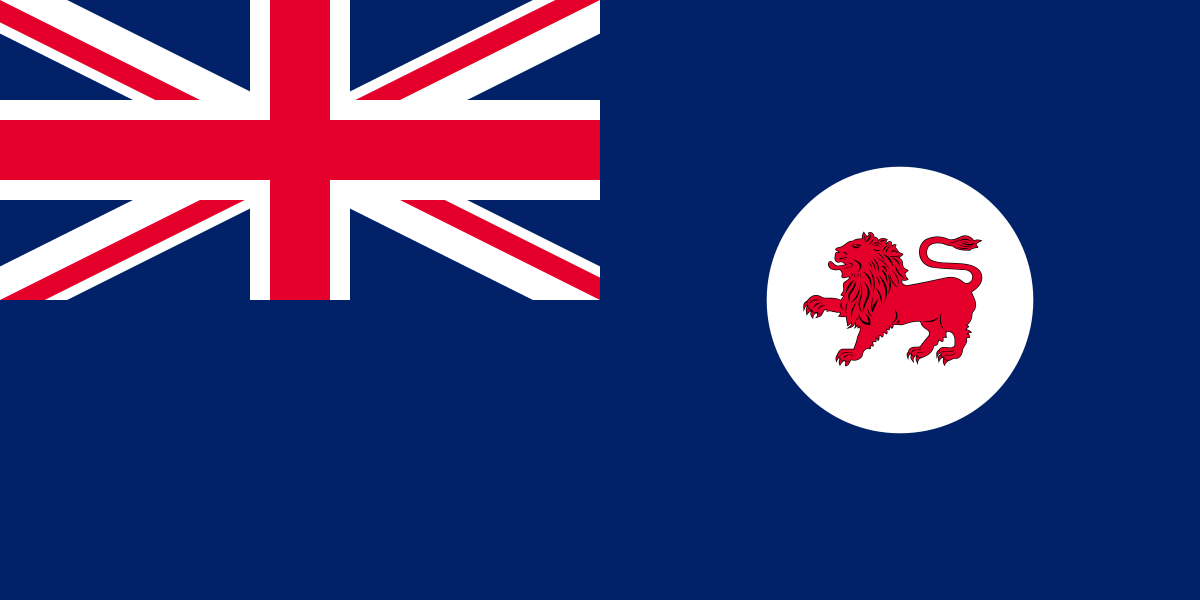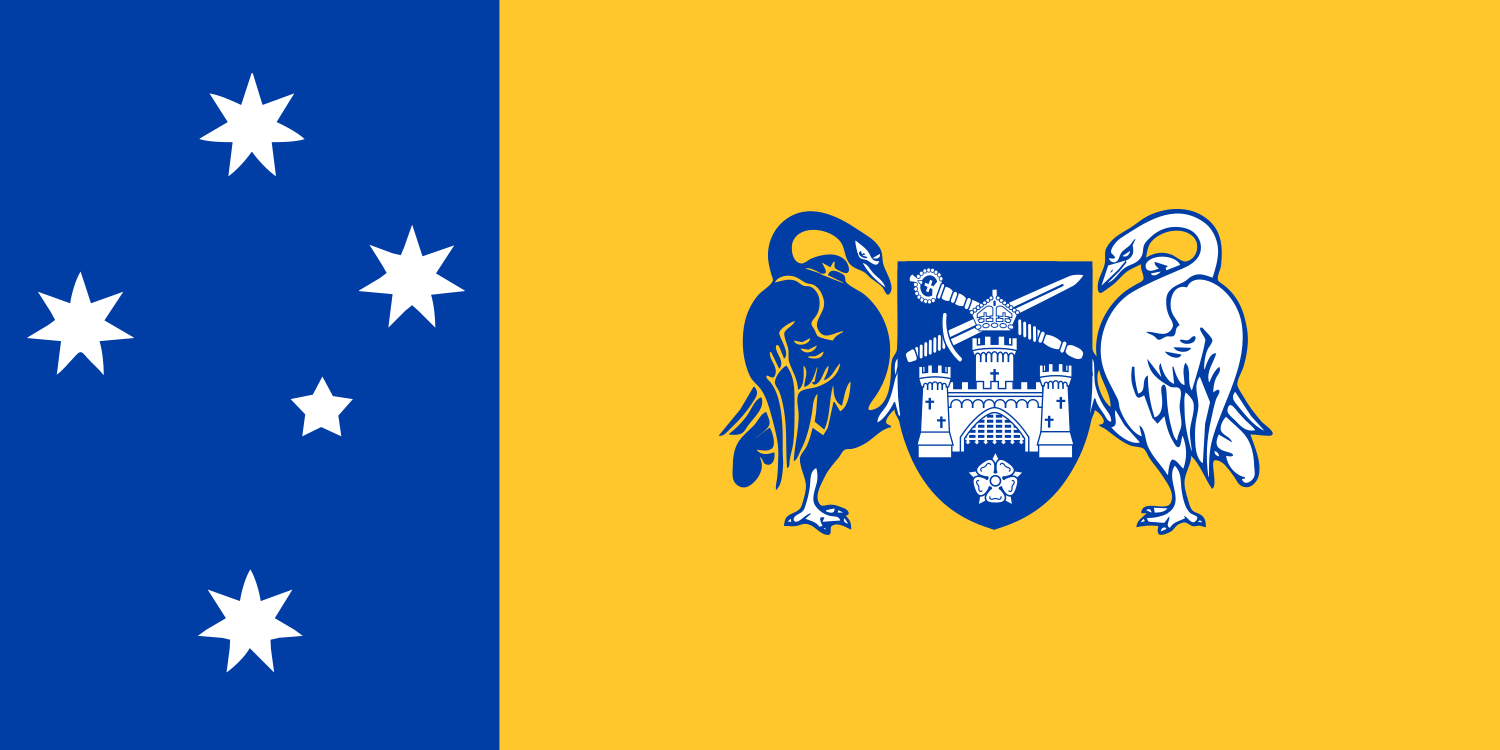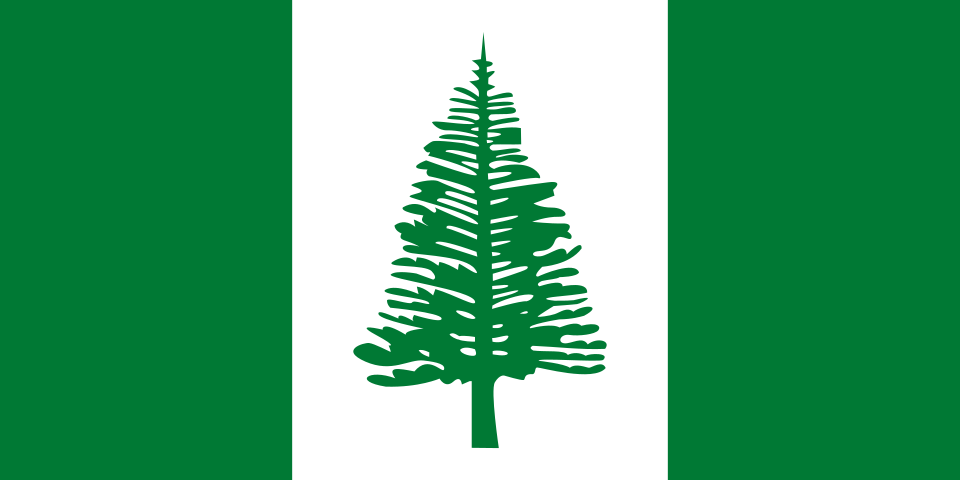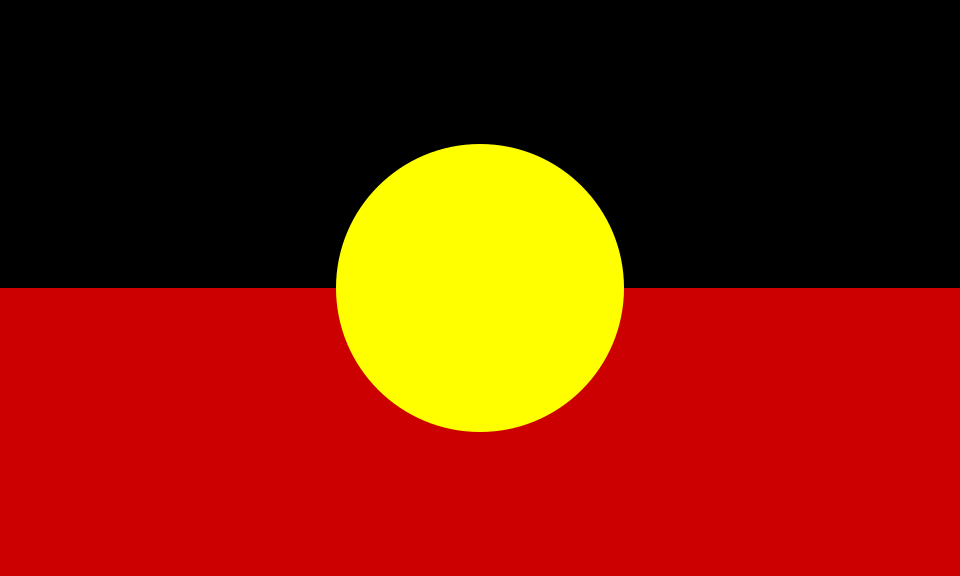Difference between revisions of "AY Honors/Flags of Australia/Answer Key"
(+ answers) |
(Marked this version for translation) |
||
| Line 7: | Line 7: | ||
Flags have been in use since the earliest recollection of civilised man. Originally, flags were the personal emblems of chieftains or leaders of armies. In later times flags were a way of expressing a people’s identity and pride. | Flags have been in use since the earliest recollection of civilised man. Originally, flags were the personal emblems of chieftains or leaders of armies. In later times flags were a way of expressing a people’s identity and pride. | ||
| + | <!--T:33--> | ||
In land wars through the ages the flag formed a rallying point for troops and often the tide of a battle was turned by the standard bearer rallying his troops around the flag. | In land wars through the ages the flag formed a rallying point for troops and often the tide of a battle was turned by the standard bearer rallying his troops around the flag. | ||
| + | <!--T:34--> | ||
In Australia, the National War Memorial in Canberra houses many regimental and national flags that have passed through shot and shell. They are preserved for posterity and treated with due reverence by visitors. Flags tell a story through their colours, badges and symbols. | In Australia, the National War Memorial in Canberra houses many regimental and national flags that have passed through shot and shell. They are preserved for posterity and treated with due reverence by visitors. Flags tell a story through their colours, badges and symbols. | ||
| + | <!--T:35--> | ||
Before Federation, Australia’s colonies flew the flags of Great Britain – the Union Jack (correctly named the Union Flag) and its other flags. | Before Federation, Australia’s colonies flew the flags of Great Britain – the Union Jack (correctly named the Union Flag) and its other flags. | ||
| + | <!--T:36--> | ||
Growing Australian nationalism in the 1850’s inspired the use of many unofficial flags – a common feature of which was the Southern Cross, a constellation unique to southern skies. Among the better-known flags in Australia’s early colonial history are the National Colonial flag (1823), the Anti-Transportation League flag (1851), the Murray River flag (1853), the Eureka flag (1854) and the Australian Federation flag (1880 – 1890’s). | Growing Australian nationalism in the 1850’s inspired the use of many unofficial flags – a common feature of which was the Southern Cross, a constellation unique to southern skies. Among the better-known flags in Australia’s early colonial history are the National Colonial flag (1823), the Anti-Transportation League flag (1851), the Murray River flag (1853), the Eureka flag (1854) and the Australian Federation flag (1880 – 1890’s). | ||
| + | <!--T:37--> | ||
From 1870 each Australian colony adopted as its flag, the British blue ensign, incorporating a different badge in the fly to distinguish it from other colonies. | From 1870 each Australian colony adopted as its flag, the British blue ensign, incorporating a different badge in the fly to distinguish it from other colonies. | ||
| + | <!--T:38--> | ||
On January 1, 1901, the six colonies united to form the Commonwealth of Australia. In search of a flag for the new nation, the Commonwealth Government announced a worldwide competition. Entrants were asked to send a design for two flags – one for official and naval purposes and one for merchant ships. | On January 1, 1901, the six colonies united to form the Commonwealth of Australia. In search of a flag for the new nation, the Commonwealth Government announced a worldwide competition. Entrants were asked to send a design for two flags – one for official and naval purposes and one for merchant ships. | ||
| + | <!--T:39--> | ||
<noinclude></translate></noinclude> | <noinclude></translate></noinclude> | ||
{{CloseReq}} | {{CloseReq}} | ||
| Line 28: | Line 35: | ||
The Commonwealth Government announced a Federal Flag design competition on April 29th, 1901. The Review of Reviews for Australia, a Melbourne journal, had initiated an Australian flag competition in 1900. It was agreed that the entries received by this paper would be accepted in the Government’s competition. The contest attracted 32,823 entries from men, women and children. | The Commonwealth Government announced a Federal Flag design competition on April 29th, 1901. The Review of Reviews for Australia, a Melbourne journal, had initiated an Australian flag competition in 1900. It was agreed that the entries received by this paper would be accepted in the Government’s competition. The contest attracted 32,823 entries from men, women and children. | ||
| + | <!--T:40--> | ||
An expert panel of judges assessed the entries using guidelines that included, history, heraldry, distinctiveness, utility and cost of manufacture. | An expert panel of judges assessed the entries using guidelines that included, history, heraldry, distinctiveness, utility and cost of manufacture. | ||
| + | <!--T:41--> | ||
On September 3, 1901, the Prime Minister, Edmond Barton, announced that five entrants who had submitted similar designs, were to share the honour of being declared the designers of the Australian National Flag. | On September 3, 1901, the Prime Minister, Edmond Barton, announced that five entrants who had submitted similar designs, were to share the honour of being declared the designers of the Australian National Flag. | ||
| + | <!--T:42--> | ||
The Commonwealth Government and the Review of Reviews for Australia each provided seventy-five pounds and the Havelock Tobacco Company added fifty pounds to this, making a total prize of two hundred pounds (a substantial amount for those days). | The Commonwealth Government and the Review of Reviews for Australia each provided seventy-five pounds and the Havelock Tobacco Company added fifty pounds to this, making a total prize of two hundred pounds (a substantial amount for those days). | ||
| + | <!--T:43--> | ||
<noinclude></translate></noinclude> | <noinclude></translate></noinclude> | ||
{{CloseReq}} <!-- 2 --> | {{CloseReq}} <!-- 2 --> | ||
| Line 43: | Line 54: | ||
The Australian Blue and Red Ensigns feature the five stars of the Southern Cross on the fly, with the Commonwealth Star on the lower hoist and the Union Jack in the canton. The Union Jack represents the historical link to Britain. The Southern Cross represents the country’s position in the Southern Hemisphere. The Commonwealth Star, with its six points represents the unity of the six States. | The Australian Blue and Red Ensigns feature the five stars of the Southern Cross on the fly, with the Commonwealth Star on the lower hoist and the Union Jack in the canton. The Union Jack represents the historical link to Britain. The Southern Cross represents the country’s position in the Southern Hemisphere. The Commonwealth Star, with its six points represents the unity of the six States. | ||
| + | <!--T:44--> | ||
{| border="1" cellspacing="0" cellpadding="4" style="text-align: center" | {| border="1" cellspacing="0" cellpadding="4" style="text-align: center" | ||
|- | |- | ||
| Line 48: | Line 60: | ||
|} | |} | ||
| + | <!--T:45--> | ||
Originally the Blue Ensign was reserved for naval and official use while the Red Ensign was to be flown by the merchant fleet and private citizens. By 1903 the stars of the Southern Cross were standardised to four seven pointed and one five pointed stars. | Originally the Blue Ensign was reserved for naval and official use while the Red Ensign was to be flown by the merchant fleet and private citizens. By 1903 the stars of the Southern Cross were standardised to four seven pointed and one five pointed stars. | ||
| + | <!--T:46--> | ||
In December 1908 it was gazetted that the Commonwealth Star be altered from six to seven points to represent the six States and all the Australian territories. | In December 1908 it was gazetted that the Commonwealth Star be altered from six to seven points to represent the six States and all the Australian territories. | ||
| + | <!--T:47--> | ||
{| border="1" cellspacing="0" cellpadding="4" style="text-align: center" | {| border="1" cellspacing="0" cellpadding="4" style="text-align: center" | ||
|- | |- | ||
| Line 57: | Line 72: | ||
|} | |} | ||
| + | <!--T:48--> | ||
<noinclude></translate></noinclude> | <noinclude></translate></noinclude> | ||
{{CloseReq}} <!-- 3 --> | {{CloseReq}} <!-- 3 --> | ||
| Line 67: | Line 83: | ||
In the same way that a coat of arms was linked to a ruler or State, the national flag has become a symbol with which people can identify. Flags have come to symbolise the people as a nation, rather than the actual State. For example, the Flag of the Union (Union Jack), which has never officially been declared to be the British national flag, provides proof that how people feel toward a flag is far more important than whether legislative action has been taken to incorporate a flag into the constitution. | In the same way that a coat of arms was linked to a ruler or State, the national flag has become a symbol with which people can identify. Flags have come to symbolise the people as a nation, rather than the actual State. For example, the Flag of the Union (Union Jack), which has never officially been declared to be the British national flag, provides proof that how people feel toward a flag is far more important than whether legislative action has been taken to incorporate a flag into the constitution. | ||
| + | <!--T:49--> | ||
Almost everywhere in the world, the national flag is held so close to people’s hearts that they will risk their lives for it. Under foreign occupation, for example, displaying the national flag has often been an offence punishable by death and yet there have always been people who have been willing to stand up and defiantly hoist their flag as a way of saying, “This is in our country, we will not accept interlopers!” | Almost everywhere in the world, the national flag is held so close to people’s hearts that they will risk their lives for it. Under foreign occupation, for example, displaying the national flag has often been an offence punishable by death and yet there have always been people who have been willing to stand up and defiantly hoist their flag as a way of saying, “This is in our country, we will not accept interlopers!” | ||
| + | <!--T:50--> | ||
The national flag as a visual symbol of a nation is so ingrained in modern consciousness that often people just use a flag to represent the nation, rather than its name. | The national flag as a visual symbol of a nation is so ingrained in modern consciousness that often people just use a flag to represent the nation, rather than its name. | ||
| + | <!--T:51--> | ||
'''Ethical Significance'''<br> | '''Ethical Significance'''<br> | ||
The Australian national flag represents the values that are part of the psyche of the Australian people. For example, belief that everyone should be entitled to a “fair go” and the looking after the interests of family and friends (mates). When the Colonies of Australia federated into The Commonwealth of Australia, the new nation was built upon the Christian values of integrity, accountability, diligence, perseverance and discipline. | The Australian national flag represents the values that are part of the psyche of the Australian people. For example, belief that everyone should be entitled to a “fair go” and the looking after the interests of family and friends (mates). When the Colonies of Australia federated into The Commonwealth of Australia, the new nation was built upon the Christian values of integrity, accountability, diligence, perseverance and discipline. | ||
| + | <!--T:52--> | ||
These Christian values were incorporated into the Australian Constitution to ensure the nation had clear guidelines upon which to proceed in nation building. | These Christian values were incorporated into the Australian Constitution to ensure the nation had clear guidelines upon which to proceed in nation building. | ||
| + | <!--T:53--> | ||
The national flag also represents those values enshrined in the Constitution. | The national flag also represents those values enshrined in the Constitution. | ||
| + | <!--T:54--> | ||
'''Moral Significance'''<br> | '''Moral Significance'''<br> | ||
When on this earth, Jesus stated that the people were to “Render unto Caesar the things that are Caesars and unto God the things that are God’s”. (Matt 22:21). He declared that since they were living under the protection of the Roman power, they should render to that power the support it claimed, so long as this did not conflict with a higher duty. But while peaceably subject to the laws of the land, they should at all times give their first allegiance to God. | When on this earth, Jesus stated that the people were to “Render unto Caesar the things that are Caesars and unto God the things that are God’s”. (Matt 22:21). He declared that since they were living under the protection of the Roman power, they should render to that power the support it claimed, so long as this did not conflict with a higher duty. But while peaceably subject to the laws of the land, they should at all times give their first allegiance to God. | ||
| + | <!--T:55--> | ||
The Apostle Paul also states that the authorities that exist are appointed by God and that resistance to them resists God. For the authorities are His ministers for the good of the people and the executer of wrath on him who practices evil. (Romans 13:1-7) | The Apostle Paul also states that the authorities that exist are appointed by God and that resistance to them resists God. For the authorities are His ministers for the good of the people and the executer of wrath on him who practices evil. (Romans 13:1-7) | ||
| + | <!--T:56--> | ||
The national flag represents the authority appointed by God for the good of the people and likewise is to be treated with the respect due to the authorities. | The national flag represents the authority appointed by God for the good of the people and likewise is to be treated with the respect due to the authorities. | ||
| + | <!--T:57--> | ||
<noinclude></translate></noinclude> | <noinclude></translate></noinclude> | ||
{{CloseReq}} <!-- 4 --> | {{CloseReq}} <!-- 4 --> | ||
| Line 94: | Line 119: | ||
The flags of all Australian States bear the Union Jack in the canton on a dark blue field – each distinguished by a State emblem. These flags were authorised by the Colonial Naval Defence Act of 1865 and were created between 1870 and 1904. The flags of the Territories were adopted in later years of the twentieth century. | The flags of all Australian States bear the Union Jack in the canton on a dark blue field – each distinguished by a State emblem. These flags were authorised by the Colonial Naval Defence Act of 1865 and were created between 1870 and 1904. The flags of the Territories were adopted in later years of the twentieth century. | ||
| + | <!--T:58--> | ||
'''New South Wales'''<br> | '''New South Wales'''<br> | ||
The first badge of New South Wales was authorised in 1869 was a red cross of St George, the traditional emblem of England, on a silver background. This badge was replaced in 1876, by a more distinctive design, based on the National Colonial Flag, with four eight pointed stars representing the Southern Cross and a gold lion of England placed on the red cross of St George. | The first badge of New South Wales was authorised in 1869 was a red cross of St George, the traditional emblem of England, on a silver background. This badge was replaced in 1876, by a more distinctive design, based on the National Colonial Flag, with four eight pointed stars representing the Southern Cross and a gold lion of England placed on the red cross of St George. | ||
| + | <!--T:59--> | ||
[[File:Flag of New South Wales.svg]] | [[File:Flag of New South Wales.svg]] | ||
| + | <!--T:60--> | ||
'''Victoria'''<br> | '''Victoria'''<br> | ||
The Victorian flag was proclaimed by the governor in 1870. The badge of the flag was the five stars of the Southern Cross on the fly. In 1877 the Imperial Crown was added to the Southern Cross Badge of Victoria. The St Edwards Crown that is now featured on the State flag replaced the Imperial Crown in 1910 upon the accession of Edward VII, and it has not changed since then. The stars of the Southern Cross on the Victorian flag differ from those on the Australian national flag in that they have a different number of points, to indicate their varying brightness. | The Victorian flag was proclaimed by the governor in 1870. The badge of the flag was the five stars of the Southern Cross on the fly. In 1877 the Imperial Crown was added to the Southern Cross Badge of Victoria. The St Edwards Crown that is now featured on the State flag replaced the Imperial Crown in 1910 upon the accession of Edward VII, and it has not changed since then. The stars of the Southern Cross on the Victorian flag differ from those on the Australian national flag in that they have a different number of points, to indicate their varying brightness. | ||
| + | <!--T:61--> | ||
{| border="1" cellspacing="0" cellpadding="4" style="text-align: center" | {| border="1" cellspacing="0" cellpadding="4" style="text-align: center" | ||
|- | |- | ||
| Line 107: | Line 136: | ||
|} | |} | ||
| + | <!--T:62--> | ||
'''Queensland'''<br> | '''Queensland'''<br> | ||
The badge of the Queensland State flag is a light blue Maltese style cross with the crown of St Edward superimposed at its centre. The design was approved in 1876. The first design considered for the badge was a depiction of the head of Queen Victoria, but this was rejected because it was deemed to be too difficult to reproduce well on a flag. | The badge of the Queensland State flag is a light blue Maltese style cross with the crown of St Edward superimposed at its centre. The design was approved in 1876. The first design considered for the badge was a depiction of the head of Queen Victoria, but this was rejected because it was deemed to be too difficult to reproduce well on a flag. | ||
| + | <!--T:63--> | ||
[[File:Flag of Queensland.svg]] | [[File:Flag of Queensland.svg]] | ||
| + | <!--T:64--> | ||
'''South Australia'''<br> | '''South Australia'''<br> | ||
The South Australian State flag was proclaimed in 1904. It features a piping shrike (white backed magpie) standing on a eucalyptus branch on a golden disc that represents the sun. | The South Australian State flag was proclaimed in 1904. It features a piping shrike (white backed magpie) standing on a eucalyptus branch on a golden disc that represents the sun. | ||
| + | <!--T:65--> | ||
[[File:Flag of South Australia.svg]] | [[File:Flag of South Australia.svg]] | ||
| + | <!--T:66--> | ||
'''Western Australia'''<br> | '''Western Australia'''<br> | ||
Since the 1830s the black swan has been commonly used as an emblem of Western Australia. In the early days of settlement, it was known as the Swan River Colony. The Government proposed the adoption of the Black Swan Badge in 1870 and it use on the flag was confirmed 1875. Originally facing away from the hoist, the swan was reversed in 1953. | Since the 1830s the black swan has been commonly used as an emblem of Western Australia. In the early days of settlement, it was known as the Swan River Colony. The Government proposed the adoption of the Black Swan Badge in 1870 and it use on the flag was confirmed 1875. Originally facing away from the hoist, the swan was reversed in 1953. | ||
| + | <!--T:67--> | ||
{| border="1" cellspacing="0" cellpadding="4" style="text-align: center" | {| border="1" cellspacing="0" cellpadding="4" style="text-align: center" | ||
|- | |- | ||
| Line 125: | Line 160: | ||
|} | |} | ||
| + | <!--T:68--> | ||
'''Tasmania'''<br> | '''Tasmania'''<br> | ||
The red lion on a white badge was officially the badge of Tasmania in 1876 and confirmed in 1975. There is no record of the reason for using the lion “passant” on the State flag, although lions have been prominent in European heraldry for centuries. | The red lion on a white badge was officially the badge of Tasmania in 1876 and confirmed in 1975. There is no record of the reason for using the lion “passant” on the State flag, although lions have been prominent in European heraldry for centuries. | ||
| + | <!--T:69--> | ||
[[File:Flag of Tasmania.svg]] | [[File:Flag of Tasmania.svg]] | ||
| + | <!--T:70--> | ||
'''Northern Territory'''<br> | '''Northern Territory'''<br> | ||
To mark the granting of self-government to the Territory in 1978, this flag was adopted. The black panel against the hoist bears the Southern Cross the stars of which have the same number of points as the Victorian State Flag. On the right hand ochre coloured panel is a stylised Sturt’s Desert Rose (the State’s floral emblem) in white with a black star at its centre. The seven petals of the rose and the seven points on the star represent the six States and the Northern Territory. | To mark the granting of self-government to the Territory in 1978, this flag was adopted. The black panel against the hoist bears the Southern Cross the stars of which have the same number of points as the Victorian State Flag. On the right hand ochre coloured panel is a stylised Sturt’s Desert Rose (the State’s floral emblem) in white with a black star at its centre. The seven petals of the rose and the seven points on the star represent the six States and the Northern Territory. | ||
| + | <!--T:71--> | ||
[[File:Flag of the Northern Territory.svg]] | [[File:Flag of the Northern Territory.svg]] | ||
| + | <!--T:72--> | ||
'''Australian Capital Territory'''<br> | '''Australian Capital Territory'''<br> | ||
The Australian Capital Territory (ACT) flag was adopted in 1993, after a public selection process. The blue and gold are regional colours. The blue panel against the hoist bears the Southern Cross. On the right hand golden panel the blue and white swans symbolise Aboriginal and European Australians. The castle alludes to Australia’s capital city, Canberra, and the crown of St Edward represents the role of the sovereign in government. The sword of justice, the parliamentary mace and the rose of York are depicted on the shield. | The Australian Capital Territory (ACT) flag was adopted in 1993, after a public selection process. The blue and gold are regional colours. The blue panel against the hoist bears the Southern Cross. On the right hand golden panel the blue and white swans symbolise Aboriginal and European Australians. The castle alludes to Australia’s capital city, Canberra, and the crown of St Edward represents the role of the sovereign in government. The sword of justice, the parliamentary mace and the rose of York are depicted on the shield. | ||
| + | <!--T:73--> | ||
From 1927 when the ACT was established until this new design became the official flag in 1993, the City of Canberra’s flag had been used as a de facto flag. | From 1927 when the ACT was established until this new design became the official flag in 1993, the City of Canberra’s flag had been used as a de facto flag. | ||
| + | <!--T:74--> | ||
[[File:Flag of the Australian Capital Territory.svg]] | [[File:Flag of the Australian Capital Territory.svg]] | ||
| + | <!--T:75--> | ||
'''The External Territories'''<br> | '''The External Territories'''<br> | ||
Australia has seven external territories: Norfolk Island, Heard Island and McDonald Island, Christmas Island, the Cocos (Keeling) Islands, The Australian Antarctic Territory, the Coral Sea Islands, and Ashmore and Cartier Islands. Apart from Norfolk Island, the Australian National Flag is the official flag for these territories. | Australia has seven external territories: Norfolk Island, Heard Island and McDonald Island, Christmas Island, the Cocos (Keeling) Islands, The Australian Antarctic Territory, the Coral Sea Islands, and Ashmore and Cartier Islands. Apart from Norfolk Island, the Australian National Flag is the official flag for these territories. | ||
| + | <!--T:76--> | ||
'''Norfolk Island''' is the only external territory to have its own official flag that was adopted in 1980. This flag has three vertical panels – the outer two being deep green and the central panel is white and bears a green Norfolk Island Pine as a charge. | '''Norfolk Island''' is the only external territory to have its own official flag that was adopted in 1980. This flag has three vertical panels – the outer two being deep green and the central panel is white and bears a green Norfolk Island Pine as a charge. | ||
| + | <!--T:77--> | ||
[[File:Flag of Norfolk Island.svg]] | [[File:Flag of Norfolk Island.svg]] | ||
| + | <!--T:78--> | ||
'''Aboriginal Flag'''<br> | '''Aboriginal Flag'''<br> | ||
The Aboriginal Flag was designed by Harold Thomas in 1971. The black represents the Aboriginal people, the red the earth and their spiritual relationship to the land, and the yellow the sun, the giver of life. | The Aboriginal Flag was designed by Harold Thomas in 1971. The black represents the Aboriginal people, the red the earth and their spiritual relationship to the land, and the yellow the sun, the giver of life. | ||
| + | <!--T:79--> | ||
After a period of public consultation, the Government made the decision in July 1995 that the flag should be proclaimed a “Flag of Australia” under section 5 of the Flags Act 1953. The flag was so proclaimed by the Governor General of Australia, William Hayden, on 14 July 1995. | After a period of public consultation, the Government made the decision in July 1995 that the flag should be proclaimed a “Flag of Australia” under section 5 of the Flags Act 1953. The flag was so proclaimed by the Governor General of Australia, William Hayden, on 14 July 1995. | ||
| + | <!--T:80--> | ||
[[File:Australian Aboriginal Flag.svg]] | [[File:Australian Aboriginal Flag.svg]] | ||
| + | <!--T:81--> | ||
'''Torres Strait Islander Flag'''<br> | '''Torres Strait Islander Flag'''<br> | ||
This flag was adopted by the Torres Strait Islander people in 1992. The flag has three horizontal panels: the top and bottom panels are green and the middle one is blue. These panels are divided by thin black lines. The green is for the land, the blue for the sea and the black for the people. | This flag was adopted by the Torres Strait Islander people in 1992. The flag has three horizontal panels: the top and bottom panels are green and the middle one is blue. These panels are divided by thin black lines. The green is for the land, the blue for the sea and the black for the people. | ||
| + | <!--T:82--> | ||
In the centre of the flag is a white dari (dancer’s headdress), which is the symbol for all Torres Strait Islander people. Underneath the dari is a five-pointed star; the five points represent the island groups in the Torre Strait and the white represents peace. | In the centre of the flag is a white dari (dancer’s headdress), which is the symbol for all Torres Strait Islander people. Underneath the dari is a five-pointed star; the five points represent the island groups in the Torre Strait and the white represents peace. | ||
| + | <!--T:83--> | ||
After a period of public consultation, the Government made the decision in July 1995 that the flag should be proclaimed a “Flag of Australia” under section 5 of the Flags Act 1953. | After a period of public consultation, the Government made the decision in July 1995 that the flag should be proclaimed a “Flag of Australia” under section 5 of the Flags Act 1953. | ||
| + | <!--T:84--> | ||
The flag was so proclaimed by the Governor General of Australia, William Hayden, on 14 July 1995. | The flag was so proclaimed by the Governor General of Australia, William Hayden, on 14 July 1995. | ||
| + | <!--T:85--> | ||
[[File:Flag_of_the_Torres_Strait_Islanders.svg]] | [[File:Flag_of_the_Torres_Strait_Islanders.svg]] | ||
| + | <!--T:86--> | ||
<noinclude></translate></noinclude> | <noinclude></translate></noinclude> | ||
{{CloseReq}} <!-- 5 --> | {{CloseReq}} <!-- 5 --> | ||
| Line 176: | Line 230: | ||
The personal flags of knights of old find their counterpart in today’s house flags displayed by shipping companies and other commercial entities. Tens of thousands of schools, universities, associations and clubs also have their own flags. | The personal flags of knights of old find their counterpart in today’s house flags displayed by shipping companies and other commercial entities. Tens of thousands of schools, universities, associations and clubs also have their own flags. | ||
| + | <!--T:87--> | ||
The most common characteristics of house flags are simple partitions of the field and extensive use of initials and simple emblems. The best house flags have simple designs and distinctive features, making them easy to recognise from a distance. | The most common characteristics of house flags are simple partitions of the field and extensive use of initials and simple emblems. The best house flags have simple designs and distinctive features, making them easy to recognise from a distance. | ||
| + | <!--T:88--> | ||
The Pathfinder and Adventurer flags would be considered to be house flags. | The Pathfinder and Adventurer flags would be considered to be house flags. | ||
| + | <!--T:89--> | ||
[[File:Ensign of Qantas Kangaroo Australian 1988.png|Qantas Flag (1988)]]|} | [[File:Ensign of Qantas Kangaroo Australian 1988.png|Qantas Flag (1988)]]|} | ||
| + | <!--T:90--> | ||
<noinclude></translate></noinclude> | <noinclude></translate></noinclude> | ||
{{CloseReq}} <!-- 6 --> | {{CloseReq}} <!-- 6 --> | ||
| Line 221: | Line 279: | ||
:* When lowering the flag at the close of the period of display at half mast, the flag must be briskly raised to the top of the mast and then and lowered in a dignified, ceremonious manner. | :* When lowering the flag at the close of the period of display at half mast, the flag must be briskly raised to the top of the mast and then and lowered in a dignified, ceremonious manner. | ||
| + | <!--T:91--> | ||
The above list is not the exhaustive list of rules that are applicable. A full list is available from the Awards and National Symbols Branch, Department of Administrative Services, Canberra, ACT 2601. | The above list is not the exhaustive list of rules that are applicable. A full list is available from the Awards and National Symbols Branch, Department of Administrative Services, Canberra, ACT 2601. | ||
| + | <!--T:92--> | ||
<noinclude></translate></noinclude> | <noinclude></translate></noinclude> | ||
{{CloseReq}} <!-- 7 --> | {{CloseReq}} <!-- 7 --> | ||
| Line 232: | Line 292: | ||
When the National Flag has been dilapidated and is no longer fit for display, it should be destroyed in a dignified manner by burning privately. | When the National Flag has been dilapidated and is no longer fit for display, it should be destroyed in a dignified manner by burning privately. | ||
| + | <!--T:93--> | ||
If the flag is made of polyester or similar material that are toxic when burned, an acceptable alternative is to cut the flag into small, unrecognisable pieces. | If the flag is made of polyester or similar material that are toxic when burned, an acceptable alternative is to cut the flag into small, unrecognisable pieces. | ||
| + | <!--T:94--> | ||
<noinclude></translate></noinclude> | <noinclude></translate></noinclude> | ||
{{CloseReq}} <!-- 8 --> | {{CloseReq}} <!-- 8 --> | ||
Revision as of 20:27, 29 August 2025
1
Flags have been in use since the earliest recollection of civilised man. Originally, flags were the personal emblems of chieftains or leaders of armies. In later times flags were a way of expressing a people’s identity and pride.
In land wars through the ages the flag formed a rallying point for troops and often the tide of a battle was turned by the standard bearer rallying his troops around the flag.
In Australia, the National War Memorial in Canberra houses many regimental and national flags that have passed through shot and shell. They are preserved for posterity and treated with due reverence by visitors. Flags tell a story through their colours, badges and symbols.
Before Federation, Australia’s colonies flew the flags of Great Britain – the Union Jack (correctly named the Union Flag) and its other flags.
Growing Australian nationalism in the 1850’s inspired the use of many unofficial flags – a common feature of which was the Southern Cross, a constellation unique to southern skies. Among the better-known flags in Australia’s early colonial history are the National Colonial flag (1823), the Anti-Transportation League flag (1851), the Murray River flag (1853), the Eureka flag (1854) and the Australian Federation flag (1880 – 1890’s).
From 1870 each Australian colony adopted as its flag, the British blue ensign, incorporating a different badge in the fly to distinguish it from other colonies.
On January 1, 1901, the six colonies united to form the Commonwealth of Australia. In search of a flag for the new nation, the Commonwealth Government announced a worldwide competition. Entrants were asked to send a design for two flags – one for official and naval purposes and one for merchant ships.
2
The Commonwealth Government announced a Federal Flag design competition on April 29th, 1901. The Review of Reviews for Australia, a Melbourne journal, had initiated an Australian flag competition in 1900. It was agreed that the entries received by this paper would be accepted in the Government’s competition. The contest attracted 32,823 entries from men, women and children.
An expert panel of judges assessed the entries using guidelines that included, history, heraldry, distinctiveness, utility and cost of manufacture.
On September 3, 1901, the Prime Minister, Edmond Barton, announced that five entrants who had submitted similar designs, were to share the honour of being declared the designers of the Australian National Flag.
The Commonwealth Government and the Review of Reviews for Australia each provided seventy-five pounds and the Havelock Tobacco Company added fifty pounds to this, making a total prize of two hundred pounds (a substantial amount for those days).
3
The Australian Blue and Red Ensigns feature the five stars of the Southern Cross on the fly, with the Commonwealth Star on the lower hoist and the Union Jack in the canton. The Union Jack represents the historical link to Britain. The Southern Cross represents the country’s position in the Southern Hemisphere. The Commonwealth Star, with its six points represents the unity of the six States.
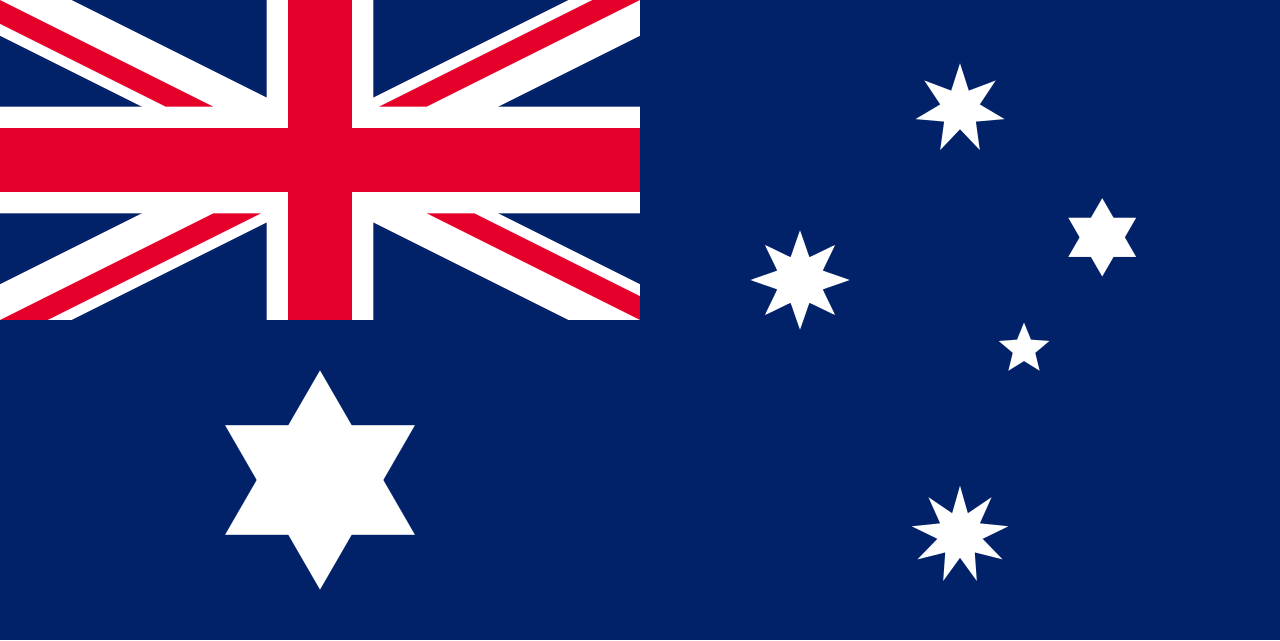 |
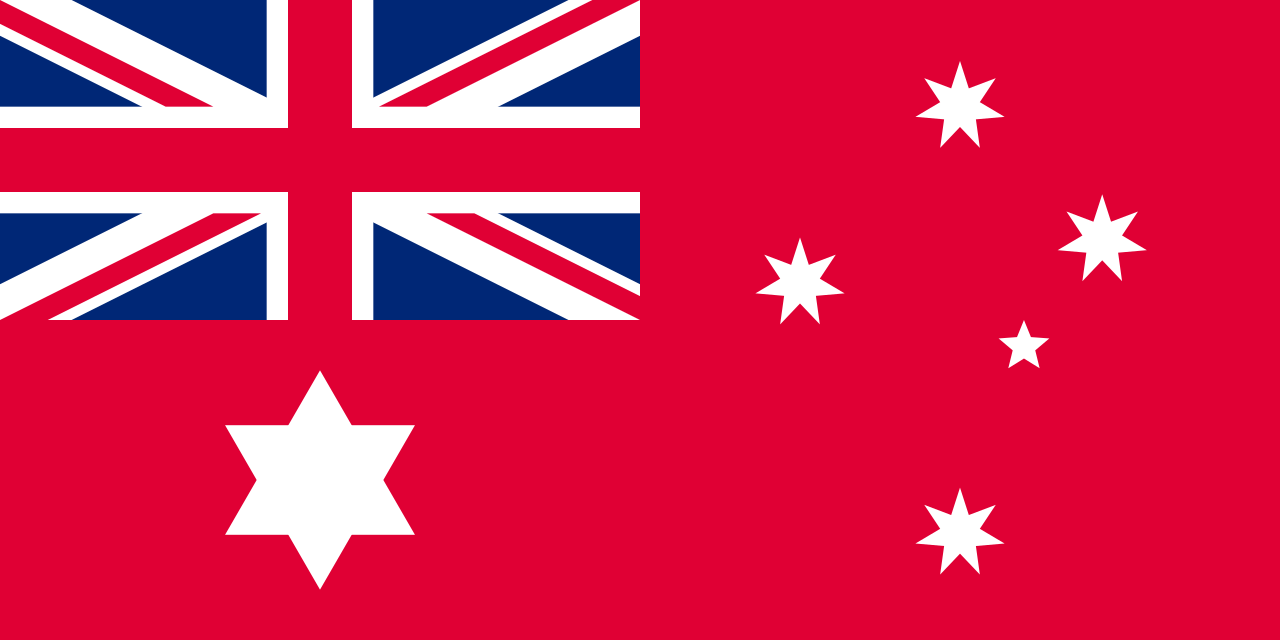
|
Originally the Blue Ensign was reserved for naval and official use while the Red Ensign was to be flown by the merchant fleet and private citizens. By 1903 the stars of the Southern Cross were standardised to four seven pointed and one five pointed stars.
In December 1908 it was gazetted that the Commonwealth Star be altered from six to seven points to represent the six States and all the Australian territories.
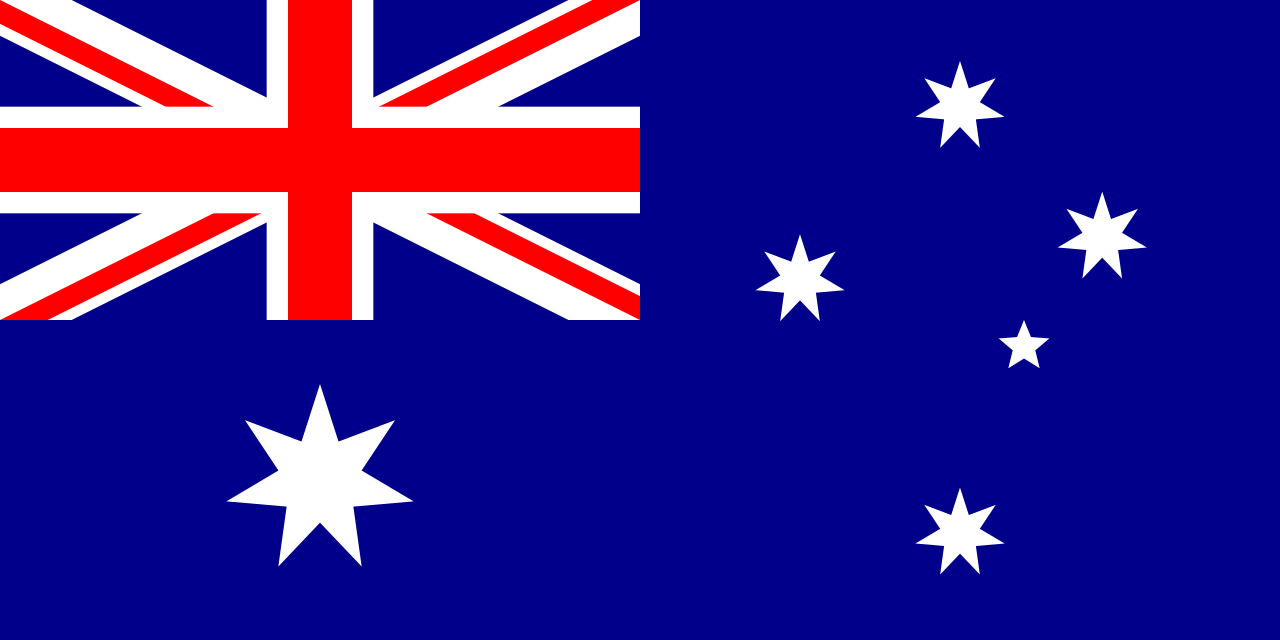 |
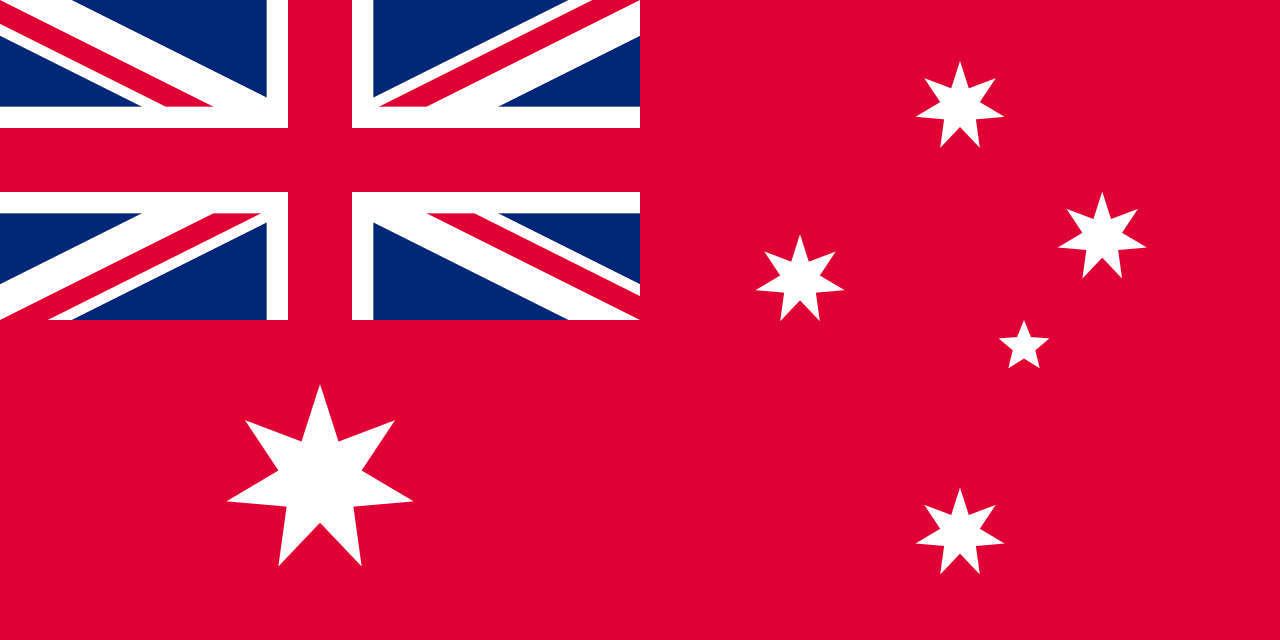
|
4
Emotional
In the same way that a coat of arms was linked to a ruler or State, the national flag has become a symbol with which people can identify. Flags have come to symbolise the people as a nation, rather than the actual State. For example, the Flag of the Union (Union Jack), which has never officially been declared to be the British national flag, provides proof that how people feel toward a flag is far more important than whether legislative action has been taken to incorporate a flag into the constitution.
Almost everywhere in the world, the national flag is held so close to people’s hearts that they will risk their lives for it. Under foreign occupation, for example, displaying the national flag has often been an offence punishable by death and yet there have always been people who have been willing to stand up and defiantly hoist their flag as a way of saying, “This is in our country, we will not accept interlopers!”
The national flag as a visual symbol of a nation is so ingrained in modern consciousness that often people just use a flag to represent the nation, rather than its name.
Ethical Significance
The Australian national flag represents the values that are part of the psyche of the Australian people. For example, belief that everyone should be entitled to a “fair go” and the looking after the interests of family and friends (mates). When the Colonies of Australia federated into The Commonwealth of Australia, the new nation was built upon the Christian values of integrity, accountability, diligence, perseverance and discipline.
These Christian values were incorporated into the Australian Constitution to ensure the nation had clear guidelines upon which to proceed in nation building.
The national flag also represents those values enshrined in the Constitution.
Moral Significance
When on this earth, Jesus stated that the people were to “Render unto Caesar the things that are Caesars and unto God the things that are God’s”. (Matt 22:21). He declared that since they were living under the protection of the Roman power, they should render to that power the support it claimed, so long as this did not conflict with a higher duty. But while peaceably subject to the laws of the land, they should at all times give their first allegiance to God.
The Apostle Paul also states that the authorities that exist are appointed by God and that resistance to them resists God. For the authorities are His ministers for the good of the people and the executer of wrath on him who practices evil. (Romans 13:1-7)
The national flag represents the authority appointed by God for the good of the people and likewise is to be treated with the respect due to the authorities.
5
The flags of all Australian States bear the Union Jack in the canton on a dark blue field – each distinguished by a State emblem. These flags were authorised by the Colonial Naval Defence Act of 1865 and were created between 1870 and 1904. The flags of the Territories were adopted in later years of the twentieth century.
New South Wales
The first badge of New South Wales was authorised in 1869 was a red cross of St George, the traditional emblem of England, on a silver background. This badge was replaced in 1876, by a more distinctive design, based on the National Colonial Flag, with four eight pointed stars representing the Southern Cross and a gold lion of England placed on the red cross of St George.
Victoria
The Victorian flag was proclaimed by the governor in 1870. The badge of the flag was the five stars of the Southern Cross on the fly. In 1877 the Imperial Crown was added to the Southern Cross Badge of Victoria. The St Edwards Crown that is now featured on the State flag replaced the Imperial Crown in 1910 upon the accession of Edward VII, and it has not changed since then. The stars of the Southern Cross on the Victorian flag differ from those on the Australian national flag in that they have a different number of points, to indicate their varying brightness.
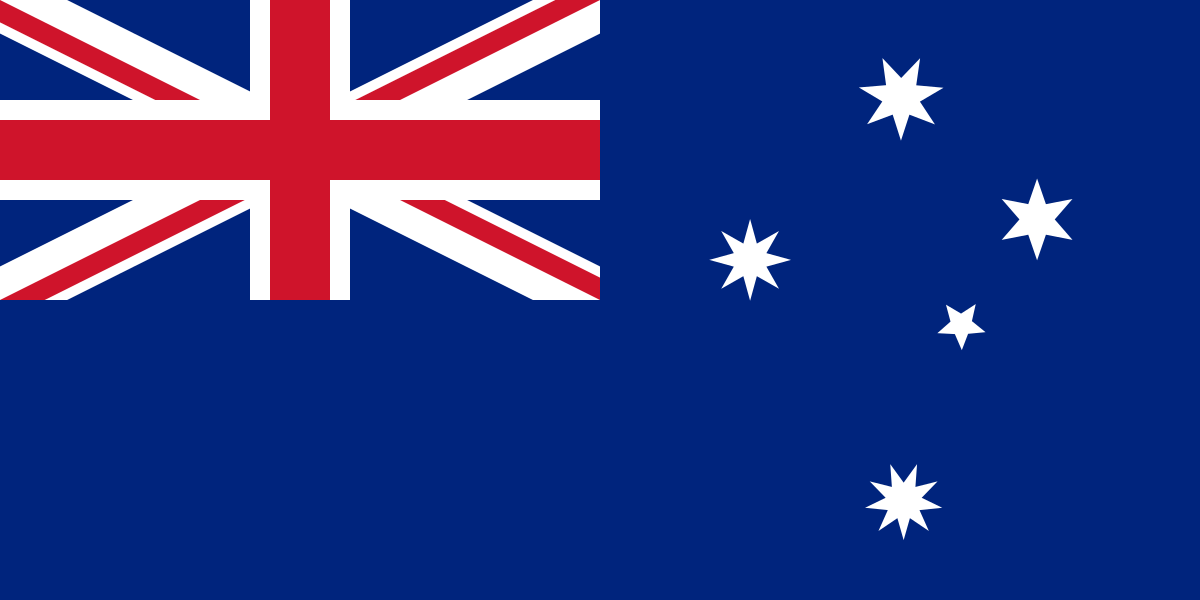 |

|
Queensland
The badge of the Queensland State flag is a light blue Maltese style cross with the crown of St Edward superimposed at its centre. The design was approved in 1876. The first design considered for the badge was a depiction of the head of Queen Victoria, but this was rejected because it was deemed to be too difficult to reproduce well on a flag.
South Australia
The South Australian State flag was proclaimed in 1904. It features a piping shrike (white backed magpie) standing on a eucalyptus branch on a golden disc that represents the sun.
Western Australia
Since the 1830s the black swan has been commonly used as an emblem of Western Australia. In the early days of settlement, it was known as the Swan River Colony. The Government proposed the adoption of the Black Swan Badge in 1870 and it use on the flag was confirmed 1875. Originally facing away from the hoist, the swan was reversed in 1953.
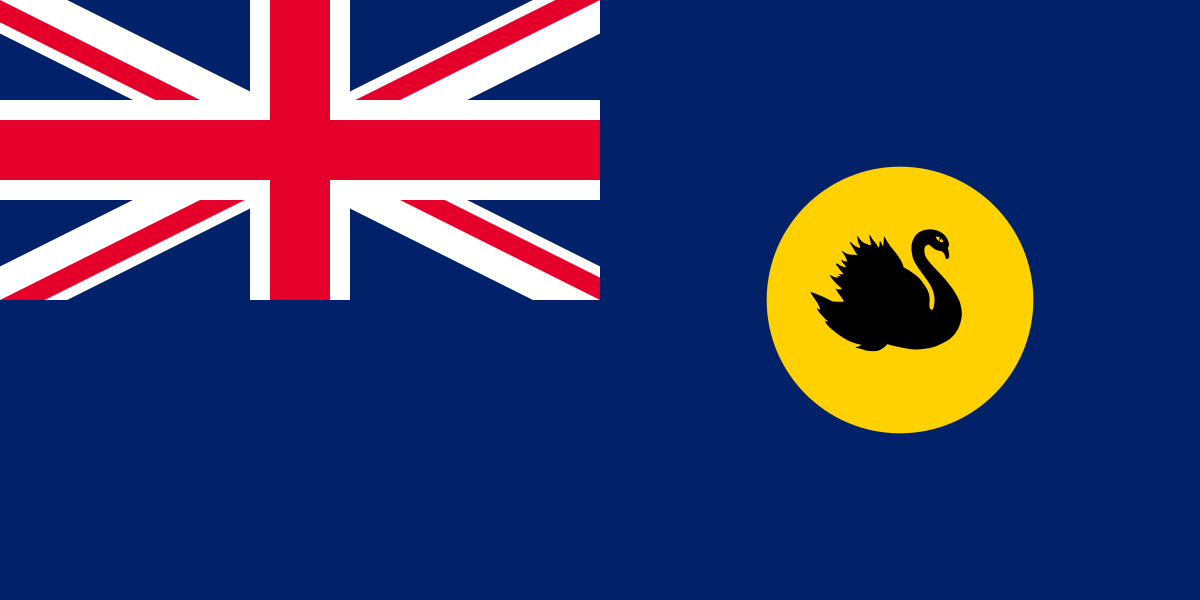 |
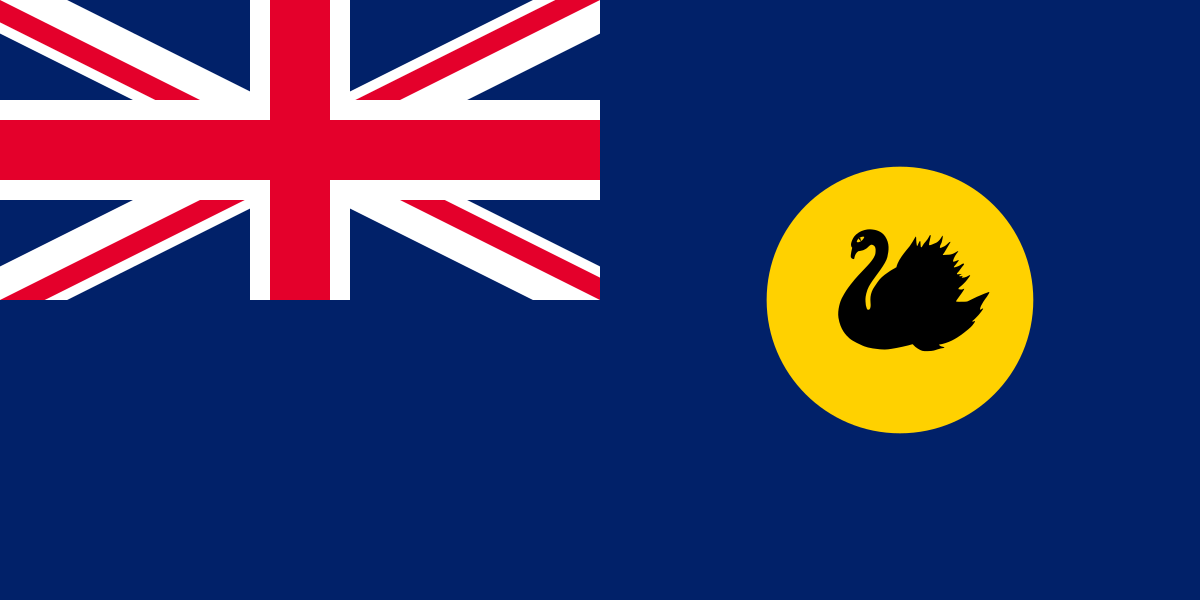
|
Tasmania
The red lion on a white badge was officially the badge of Tasmania in 1876 and confirmed in 1975. There is no record of the reason for using the lion “passant” on the State flag, although lions have been prominent in European heraldry for centuries.
Northern Territory
To mark the granting of self-government to the Territory in 1978, this flag was adopted. The black panel against the hoist bears the Southern Cross the stars of which have the same number of points as the Victorian State Flag. On the right hand ochre coloured panel is a stylised Sturt’s Desert Rose (the State’s floral emblem) in white with a black star at its centre. The seven petals of the rose and the seven points on the star represent the six States and the Northern Territory.
Australian Capital Territory
The Australian Capital Territory (ACT) flag was adopted in 1993, after a public selection process. The blue and gold are regional colours. The blue panel against the hoist bears the Southern Cross. On the right hand golden panel the blue and white swans symbolise Aboriginal and European Australians. The castle alludes to Australia’s capital city, Canberra, and the crown of St Edward represents the role of the sovereign in government. The sword of justice, the parliamentary mace and the rose of York are depicted on the shield.
From 1927 when the ACT was established until this new design became the official flag in 1993, the City of Canberra’s flag had been used as a de facto flag.
The External Territories
Australia has seven external territories: Norfolk Island, Heard Island and McDonald Island, Christmas Island, the Cocos (Keeling) Islands, The Australian Antarctic Territory, the Coral Sea Islands, and Ashmore and Cartier Islands. Apart from Norfolk Island, the Australian National Flag is the official flag for these territories.
Norfolk Island is the only external territory to have its own official flag that was adopted in 1980. This flag has three vertical panels – the outer two being deep green and the central panel is white and bears a green Norfolk Island Pine as a charge.
Aboriginal Flag
The Aboriginal Flag was designed by Harold Thomas in 1971. The black represents the Aboriginal people, the red the earth and their spiritual relationship to the land, and the yellow the sun, the giver of life.
After a period of public consultation, the Government made the decision in July 1995 that the flag should be proclaimed a “Flag of Australia” under section 5 of the Flags Act 1953. The flag was so proclaimed by the Governor General of Australia, William Hayden, on 14 July 1995.
Torres Strait Islander Flag
This flag was adopted by the Torres Strait Islander people in 1992. The flag has three horizontal panels: the top and bottom panels are green and the middle one is blue. These panels are divided by thin black lines. The green is for the land, the blue for the sea and the black for the people.
In the centre of the flag is a white dari (dancer’s headdress), which is the symbol for all Torres Strait Islander people. Underneath the dari is a five-pointed star; the five points represent the island groups in the Torre Strait and the white represents peace.
After a period of public consultation, the Government made the decision in July 1995 that the flag should be proclaimed a “Flag of Australia” under section 5 of the Flags Act 1953.
The flag was so proclaimed by the Governor General of Australia, William Hayden, on 14 July 1995.
File:Flag of the Torres Strait Islanders.svg
6
The personal flags of knights of old find their counterpart in today’s house flags displayed by shipping companies and other commercial entities. Tens of thousands of schools, universities, associations and clubs also have their own flags.
The most common characteristics of house flags are simple partitions of the field and extensive use of initials and simple emblems. The best house flags have simple designs and distinctive features, making them easy to recognise from a distance.
The Pathfinder and Adventurer flags would be considered to be house flags.
7
The following guidelines apply to the use of the Australian National Flag and to flags generally around the world.
- While being hoisted a person should face the flag, stand at attention, remain silent and persons in uniform should salute.
- Persons in uniform should salute the flag when passing in a parade or when the national anthem is played.
- The flag should be displayed only during the hours of daylight unless well illuminated.
- The flag should never touch the ground, floor or water.
- It should be raised briskly and lowered in a dignified, ceremonious manner.
- Because the national flag takes precedence over all other flags, it must never be displayed in a position inferior to any other flag.
- When flown with flags of other sovereign states, they should all be displayed at the same height and on separate flag poles of the same height.
- If there is an even number flown together in a line, the national flag will be on the left when viewed from the front.
- If there is odd number flown together in a line, the national flag is positioned in the centre.
- If there are more than five flags displayed, there should be a national flag displayed at each end of the line.
- In an enclosed circle of flags, the national flag should be flown on the flagpole immediately opposite the main entrance to a building or arena.
- In a semicircle of flags, the national flag should be in the centre.
- When flown with state, province and house flags, the order of precedence is national, state or province and then house.
- If carried in single file with other flags, the national flag should always lead.
- If carried in line abreast, it is preferable to have the national flag at each end of the line. If only one national flag is available, it should be placed in the centre of the line of flags carried abreast. Where the number of flags is even and the national flag cannot be carried in the centre (of a line of flags abreast), it should be placed (carried) on the right-hand end of the line facing the direction of movement.
- If the national flag is vertically suspended in an east-west street, the canton should be towards the north. In a north-south street the canton should be towards the east.
- When the national flag is displayed alone on a speaker’s platform, it should be flat against the wall or on a staff on the right of the speaker as they face the audience.
- When the national flag is displayed on a staff on the floor of a hall it should be on the left when viewed from the audience.
- The flag should never be used to cover a statue, monument or plaque for an unveiling ceremony; to cover a table or seat; or to mask boxes, barriers or the space between the floor and ground level on a dais or platform.
- When the flag is represented, for example, as an illustration for commercial purposes:
- It should be used in a dignified manner and reproduced accurately;
- It should not be defaced (i.e. have superimposed on it printing or illustration);
- It should not be covered by other objects; and
- All symbolic parts of it should be identifiable.
- When the flag becomes dilapidated and is no longer in a suitable condition for use, it should be destroyed in a dignified manner by burning privately. If the flag is made of polyester or similar material that are toxic when burned an acceptable alternative is to cut the flag into small, unrecognisable pieces.
- When the flag is flown at half-mast as a sign of mourning:
- It must be first be raised to the top of the mast (the peak) then immediately lowered slowly to the half-mast position;
- The flag must be lowered to at least a position recognisably half-mast so that it does not appear to have slipped down from the top of the flagpole;
- An acceptable position would be when the top of the flag is a third of the distance down from the top of the flagpole; and
- When lowering the flag at the close of the period of display at half mast, the flag must be briskly raised to the top of the mast and then and lowered in a dignified, ceremonious manner.
The above list is not the exhaustive list of rules that are applicable. A full list is available from the Awards and National Symbols Branch, Department of Administrative Services, Canberra, ACT 2601.
8
When the National Flag has been dilapidated and is no longer fit for display, it should be destroyed in a dignified manner by burning privately.
If the flag is made of polyester or similar material that are toxic when burned, an acceptable alternative is to cut the flag into small, unrecognisable pieces.
9
